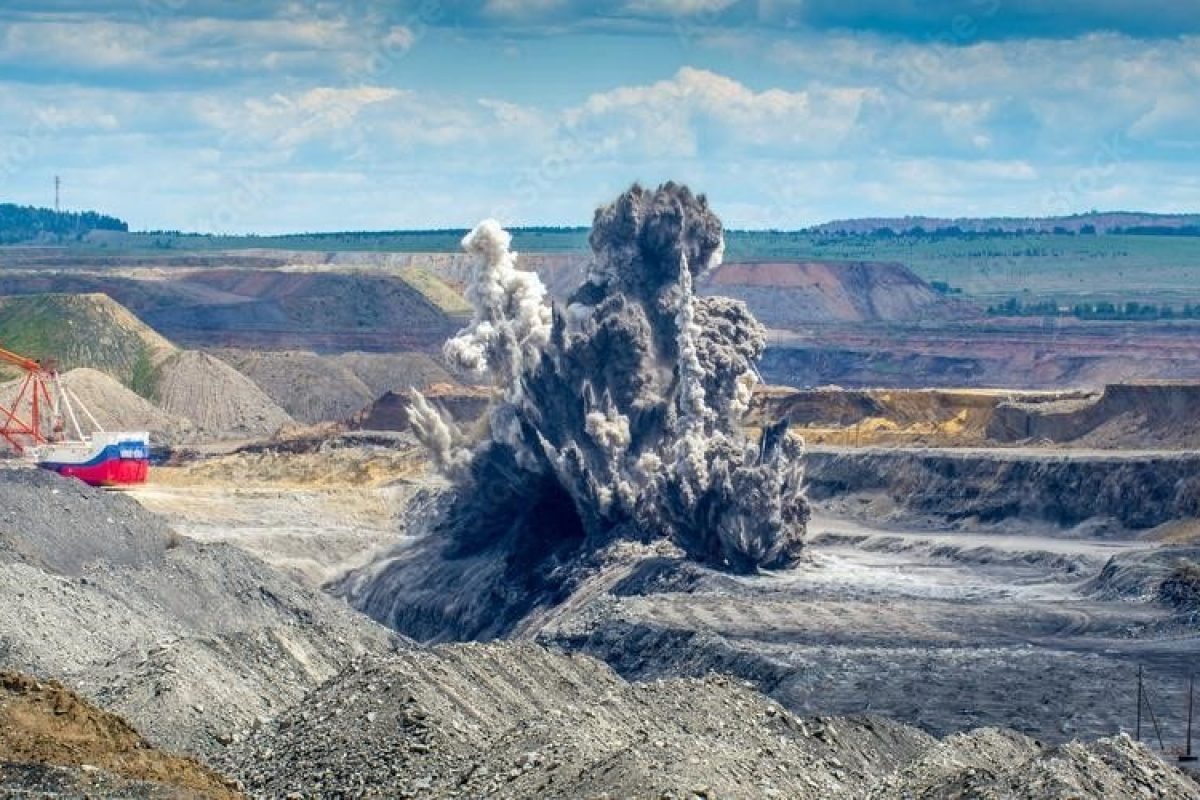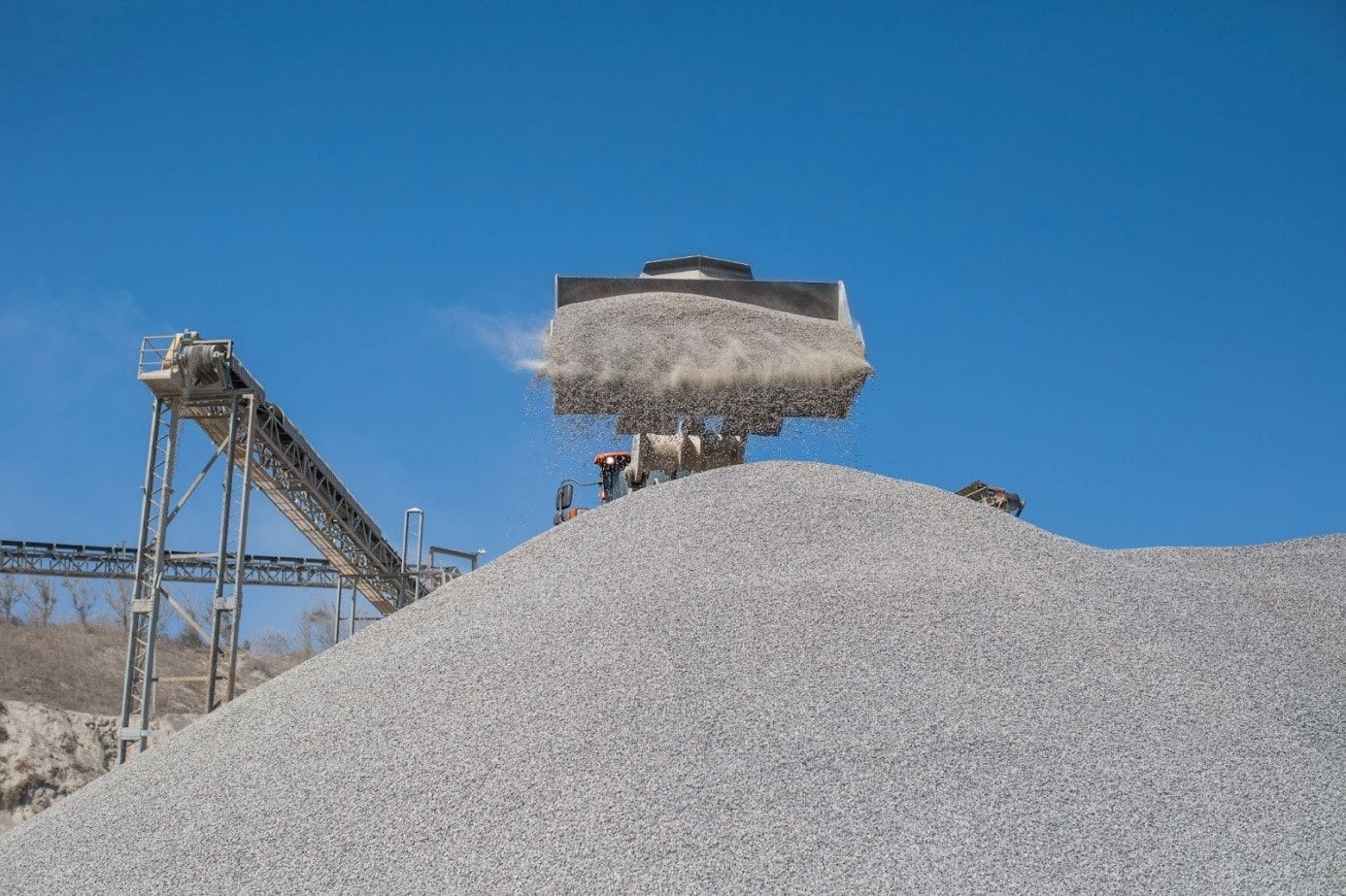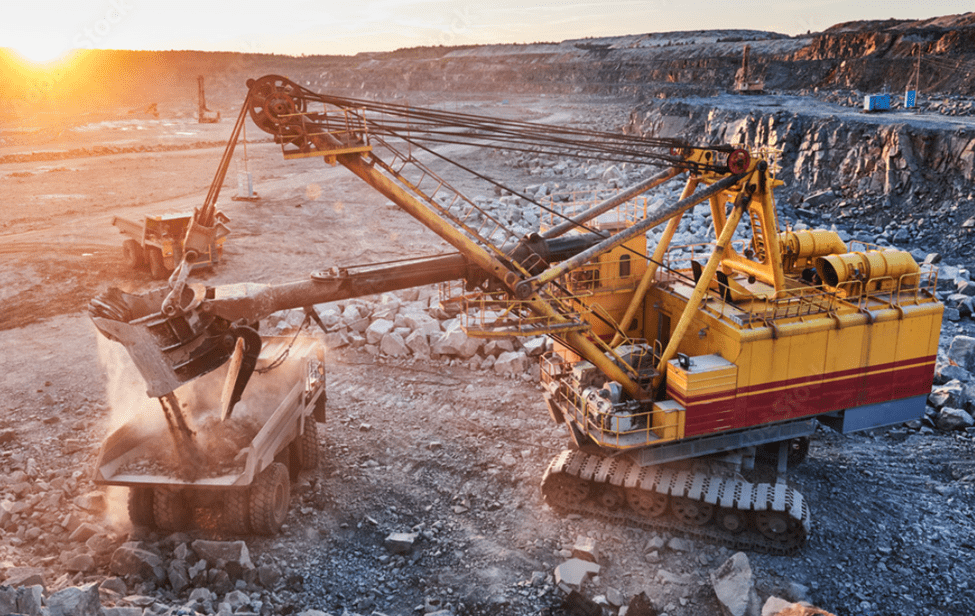Mining, forestry, and construction industries are essential contributors to global development, but they come with environmental challenges, especially concerning dust control. Airborne dust generated during drilling and blasting processes in open-pit mines poses significant health and environmental risks. Implementing smart and sustainable solutions is crucial to mitigate these challenges. In this article, we will delve into the most effective dust control practices.
Common Dust Sources in Open Pit Mines
Dust in open-pit mines originates from various sources, including drilling, loading, and blasting activities. Dust particles are commonly released during the loading process, especially in open-pit coal mines, mineral mines, and natural stone quarries. Identifying these sources is the first step in implementing effective dust control measures.
The Effects of Drilling and Blasting Operations in Open Pit Mines
Open-pit mining operations are integral to various industries, but they often grapple with the challenge of dust generation. Let’s explore the impact of drilling and blasting in open-pit mines:
Drilling Operations
Drilling is a foundational step in extracting minerals and resources in open-pit mines. This pivotal activity creates boreholes into rock formations to access valuable deposits beneath the Earth’s surface. This essential process facilitates the subsequent stages of mining, including blasting, loading, and transportation.
During drilling operations, the drill bit penetrates the rock, exerting force and fracturing the geological formations. As this mechanical interaction occurs, fine rock, soil, and minerals particles are dislodged and propelled into the surrounding atmosphere. These airborne particles, collectively known as dust, can vary in size and composition, posing challenges to both environmental sustainability and occupational health.
Several factors contribute to the intensity of dust emissions during drilling operations:
- Rock Composition: The composition of the rock being drilled can influence the amount and nature of dust generated. Softer rocks may produce finer particles, while harder rocks may yield larger fragments.
- Drill Type and Configuration: Different types of drills, such as rotary, percussion, or auger drills, can impact the size and distribution of the generated dust. The configuration of the drill bit and the drilling speed also play roles in dust emission.
- Environmental Conditions: Weather conditions, particularly wind speed and humidity, influence dust dispersion. Dry and windy conditions can exacerbate the spread of airborne particles, emphasizing the need for adaptive dust control measures.
Blasting Activities
Blasting is a prevalent and essential method employed in open-pit mining to break and fragment rocks, enabling access to valuable minerals and resources. This controlled explosion technique is crucial for the efficiency and productivity of mining operations, facilitating the subsequent phases of material extraction, transportation, and processing.
While blasting proves highly effective in fragmenting rocks, it simultaneously gives rise to a significant challenge— the generation of large quantities of dust. The explosive force dislodges particles from the blasted rock, propelling them into the air as airborne dust. The size and composition of these particles can vary, posing environmental and health risks if not properly managed.
Incorporating technological innovations is pivotal in addressing the challenges associated with dust from blasting activities. This includes the development of advanced dust suppression systems, real-time monitoring tools, and modeling techniques to predict and manage the dispersion of airborne dust.
Impact of Dust Control on Canadian and U.S. Mining
Health and Safety Considerations
- Respiratory Tract Protection: The inhalation of respirable dust poses serious health risks, leading to occupational diseases. Implementing protective measures, such as respiratory equipment and administrative controls, is vital to safeguard workers in open-pit and underground mining operations.
- Ground and Blast Vibration: Ground and blast vibrations are additional concerns in drilling and blasting processes besides airborne dust. Monitoring and controlling ground vibration through proper drilling and blasting techniques create a safer working environment.
Effective Dust Control Techniques for Drilling and Blasting Operations
As the mining industry evolves, so do the challenges associated with airborne dust generated during drilling and blasting operations. Let’s explore the cutting-edge technologies revolutionizing dust control in mining.
Dust Suppression Systems
Dust suppression systems play a pivotal role in mitigating the release of airborne particles during drilling and blasting activities. These systems are designed to control and manage dust at its source actively, preventing its dispersion into the surrounding environment.
How They Work
Dust suppression systems utilize mechanisms such as water sprays or misting systems to release a controlled amount of mist into the targeted areas. This effectively dampens dust particles, weighing them down and preventing their ascent into the air. The result is a significant reduction in airborne dust levels, contributing to improved air quality in and around mining sites.
Advantages and Applications
The advantages of dust suppression systems extend beyond immediate dust control. They minimize the environmental impact of mining operations, enhance worker safety, and align with sustainability goals. These systems find applications in various mining scenarios, from open-pit mines to underground operations, providing a versatile and effective solution.
Real-time Monitoring
Real-time dust monitoring is a game-changer in the quest for effective dust control. Traditional monitoring methods often involve periodic assessments, leaving room for undetected spikes in airborne dust levels. Real-time monitoring addresses this gap, offering immediate insights into the dynamic nature of dust emissions during mining operations.
Real-time Feedback for Adaptive Control
Equipped with sensors and advanced monitoring technologies, real-time systems provide continuous feedback on airborne dust concentrations. This data allows mining operators to adjust dust control measures instantly, ensuring their ongoing effectiveness. Additionally, real-time monitoring contributes to a proactive approach to identifying potential environmental and health risks associated with dust emissions.
Integration into Sustainable Practices
By integrating real-time monitoring into mining operations, companies demonstrate a commitment to sustainability. This technology aids in complying with environmental regulations, minimizing the industry’s ecological footprint, and fostering transparency in reporting dust emissions.
Real-time dust monitoring platform
Expansive Chemical Agents
Expansive chemical agents represent an innovative approach to dust control. These agents, when introduced into the drilling and blasting process, alter the physical properties of the rock. By promoting the creation of larger and less respirable particles, they effectively reduce the amount of dust generated.
To harness the full potential of expansive chemical agents, careful consideration of the water content in the blasting medium is crucial. Achieving the right balance ensures optimal performance, minimizing dust emissions while maintaining the efficiency of the mining process.
Sustainability and Health Benefits
The use of expansive chemical agents aligns with sustainability goals, as it addresses dust control at the molecular level, reducing the need for extensive physical interventions. Furthermore, by creating larger particles, this technology improves air quality and mitigates health risks associated with respirable dust.
Enhance Productivity and Sustainability with ABCDust
At ABCDust, we’re revolutionizing dust control and soil stabilization services worldwide. Our dust control and soil stabilization services are designed for measured performance. We utilize the DMS-ONE Platform, incorporating innovative products like DMS-DS, DMS-90, DMS-EB, DMS-DS 100, and Eziss Pro. These solutions are tailored for diverse industries, from mining and forestry to agro-industry and beyond.
ABCDust’s offerings go beyond traditional services. We also provide PM10-2.5 monitoring, road friction assessment, technical support, and extreme dust levels monitoring through the DMS system. In short, we are ready to deploy the best technology to keep your lungs clean and your operations active.
Join ABCDust in redefining industry standards and leveraging the power of smart solutions for a sustainable future. Contact us to explore how we can elevate your productivity while minimizing environmental impact.
Frequently Asked Questions
ABCDust employs a multi-faceted approach to tackle dust pollution. Our comprehensive solutions, including advanced dust suppression systems and the use of expansive chemical agents during drilling and blasting operations, significantly reduce airborne dust levels. These measures contribute to improved air quality and a safer working environment.
Drill holes are primary sources of dust generation during mining activities. ABCDust addresses this challenge by implementing water-mediated drilling techniques. This approach minimizes airborne dust particles and enhances overall dust control.
Absolutely! ABCDust’s smart dust control and soil stabilization solutions actively contribute to reducing air pollution in mining areas. By efficiently managing dust emissions from drilling, blasting, and other industrial processes, our solutions minimize particulate matter in the air, creating a healthier and environmentally responsible mining operation.





